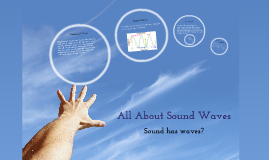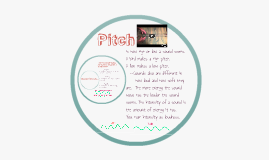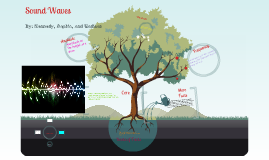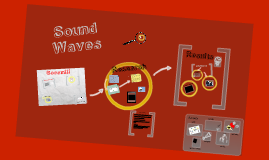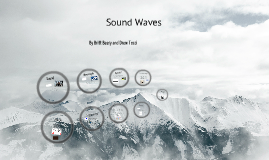Sound Waves Powerpoint
Transcript: The speed of a sound wave depends on temperature. The higher the temperature of a medium is, the more energy is produced, which results in a faster vibration of the molecules causing the sound to travel faster. Mini Quiz Answers #2 Sound waves are used in many different ways such as for ultrasounds, echolocation, and sonar waves. Echolocation is used to help animals use the echos to "see" objects in their environment. Sonar also works similar to echolocation, but it is used to check ocean depths. sound waves: Producing and detecting sound cont... 4. Some of the different properties of sound waves are frequency, amplitude, and wavelength Sound Waves: conclusion Sound Waves: Definition Mini quiz Answers #4 1. What are sound waves composed of? 2. What are some ways that sound waves are used in real life? 3. What are some different types of sound waves? 4. What are the different properties of sound waves? 2. Sound Waves are used by ultrasounds in medicine, they are used by animals as echolocation, and they are used as acoustics during musical performances. Sounds are produced by multiple vibrations (rapid back-and-forth motions that can occur in solids, liquids, and gases.) Examples of mediums that sound waves can travel through are air, wood, a glass of water, and even metal. Particles in a medium vibrate back and forth as a sound wave carries energy from the source of the wave. Sound Waves Sound waves: video 3. some examples of sound wave are Ultrasound waves, Animal Echolocation waves, and Human echo waves. 1. Sound waves are composed of vibrations. Sound Waves: Properties sound waves: Producing and detecting sound Echolocation Sound waves: How they are used Mini Quiz answer # 1 The properties of a sound wave are: Frequency- a number of wavelengths that pass by a point each second. Amplitude-the maximum distance a wave varies from its rest point. Intensity-the amount of energy that passes through a square meter of space in one second. Speed of sound-the distance traveled per unit. Direction- the path the wave takes. Wavelength-the distance from one point on a wave to the next exact same point. Refraction- Area in a wave with low density Compression-Area in a wave with high density Daijah Figgures, Mary-Olivia Gbetibouo, and Makayla Donald Februrary 13, 2017 3rd Period Sound waves allow you to hear sound around you such as music, talking, an alarm or a bell. Sound waves travel as a type of longitudinal wave that travels through solids, liquids, and gases. Sound waves are a longitudinal wave also made up of a series of compressions and rarefactions. These pictures are examples of sound waves. All sound waves are longitudinal waves. Sound waves contain compression and rarefactions. Longitudinal waves are waves where the wave moves parallel (back and forth) with the wave. sound waves: video Sound Waves: Mini Quiz mini Quiz Answers #3 In conclusion, sound waves are waves that are made up vibrations , they are longitudinal waves that require a medium to travel, and their properties include: frequency, amplitude, intensity, wavelength, speed, direction, rarefactions, and compressions. Sound waves are used all the time in everyday life, in medicine, and even animals use them. sound waves experiment with water and speakers Sound Waves: Pictures







